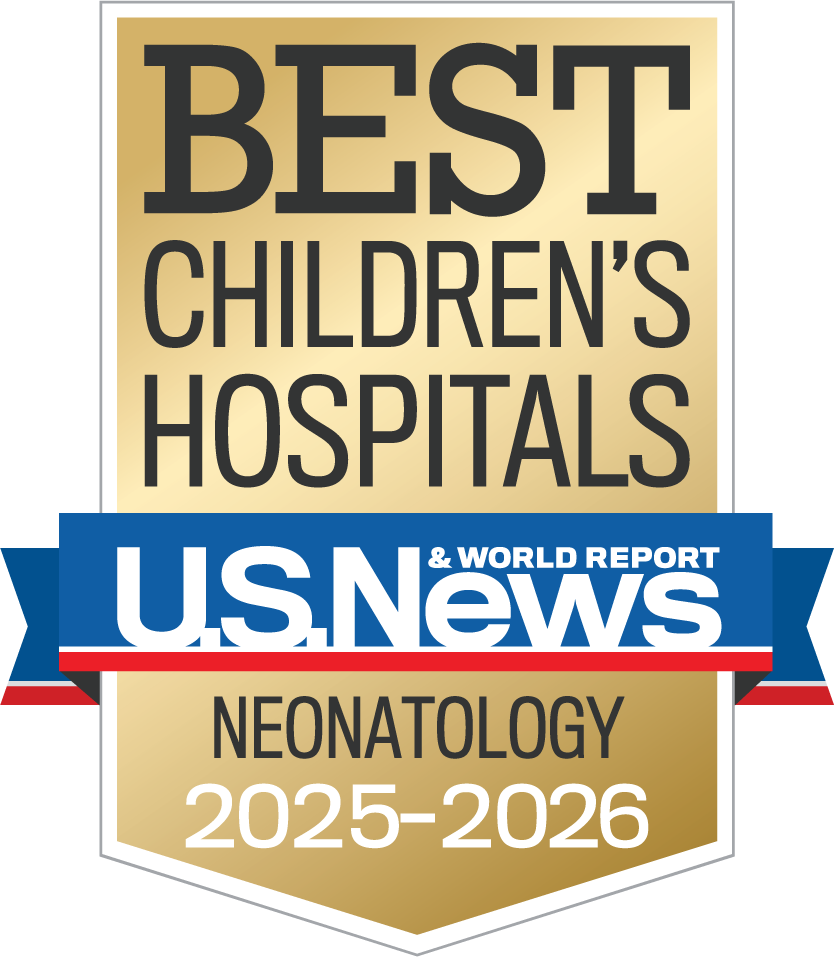Everybody makes mistakes, but in the world of medicine, even small errors can have dire consequences. For Dr. Grant Shafer, neonatologist at CHOC, finding out how errors occur and how to prevent them are ways to develop a path to diagnostic excellence.

At the start of his recent CHOC Grand Rounds discussion, Dr. Shafer cited a study from the National Academy of Medicine that defines diagnostic error as a “failure to establish an accurate and timely explanation of the patient’s health problem or problems, or to communicate that explanation to the patient will impact this on a more.”
“This report catalyzed the modern patient safety movement and led to a lot of improvements in how we provide care, as well as health care conditions,” Dr. Shafer says.
Diagnostic Errors: Definitions and impact
Around the time of the study, during what Shafer called the “patient-safety movement,” the focus on diagnostic errors took a backseat to errors of treatment. But in 2015, a follow-up report brought new attention to the subject.
Diagnostic errors are now listed as a high priority by the World Health Organization. Not only have these errors created health risks, but they also have a large financial impact on the healthcare industry. A study showed that 22% of recent malpractice payments from 1999 to 2016 were diagnosis related, for a total cost of $5.7 billion.
A diagnostic error can be broken into several categories, Dr. Shafer said. They are unintentionally delayed, wrong, missed or no-fault, which are undetectable even after a reasonable evaluation.
“There are limitations to our science, limitations to our medical practice and there are going to be, unfortunately, diagnoses which remain undetected by our modern science,” Dr. Shafer says. “This, I want to emphasize, is to not have people leaving today feeling that we need to do every single test for every single patient out there so we never miss a diagnosis. That’s not what I’m aiming for here.”
Challenges in addressing diagnostic errors
Instead, he said his goal was to find the best way to diagnose patients with the tools that are available.
One way to miss a diagnosis is when the patient is presenting several problems at the same time. This can make it easy to miss small but critical details. Another is simple miscommunication between doctors. Dr. Shafer called for ways to prevent these kinds of errors from occurring.
“The system in which we practice should have safeguards for our patients, which can sometimes fail, leading to errors,” he says.
There are gaps in the data regarding pediatrics and neonatology, but available information suggests that diagnostic errors in these fields occur at about the same rate as errors for adults – about 13 to 15% of all patients encountered. It has also been determined that most people will experience a diagnostic error at some time.
“As pediatric clinicians, I think we all strive to not be that first error that a patient undergoes during their lifetimes,” Dr. Shafer says. “And soberingly, diagnostic errors result in 40,000 to 80,000 deaths annually, a very significant number.”
A review of autopsies from neonatal intensive care and pediatric intensive care units showed that 5% of those patients had lethal but preventable diagnostic errors. In another study, more than half of pediatric attendings and trainees reported making one to two diagnostic errors per month.
Encouraging open dialogue on diagnostic errors from physicians
Discussing diagnostic errors can make healthcare professionals uncomfortable.
“We as clinicians strive to achieve the best care we possibly can,” ‘Dr. Shafer says. “And the idea about talking about errors can be a very disconcerting concept.”
While 82% of pediatric clinicians reported committing such errors within the previous year, twice as many inpatient clinicians (43%) as outpatient clinicians (22%) were comfortable discussing the topic.
“This raises some interesting points for us as clinicians that there are things about the system in which we practice that can make us more or potentially less comfortable discussing diagnostic errors,” Dr. Shafer says. “I think, again, going back to the idea of culture and systems, should we just ask what can we do to understand how we act as clinicians that may promote diagnostic excellence.”
Many of the figures Dr. Shafer cited came from pediatric studies. He said that there are few similar studies conducted with neonatal patients.
“But patients in the NICU, just like many of the pediatric patients we deal with, are fragile and require multiple interventions in a very complex, fast-moving environment and are at high risk to experience diagnostic errors,” he says.
Patients with singular problems can be easier to diagnose. But often, a patient will exhibit several symptoms and rapidly changing data. Also, some patients may need to be stabilized before they can be properly diagnosed. Sometimes, they have already been diagnosed incorrectly.
The “Swiss Cheese Model” of error prevention
“It’s very easy to be trapped by previous diagnostic labels and momentum,” Dr. Shafer says. “It can be very challenging to try to break away from that anchoring bias that we often have.”
He noted that not all misdiagnoses result in harm, even though these are the ones that receive more focus. But paying more attention to missed opportunities where there was a chance to make an earlier diagnosis could help future patients.
The causes of diagnostic errors include human fallibility and the organizational context in which they occur. And there are systems in place to help protect the patient from errors.
Dr. Shafer called this the “Swiss cheese model,” There are several layers of defense, each with holes that can allow errors to creep through. But those holes must line up before the error can reach the patient. For instance, if a radiologist misreads a report and passes a mistake along to the bedside clinician, then the error will pass through the holes.
This brought Dr. Shafer to the idea of measuring diagnostic errors. But there are gaps in being able to do this. Most information comes from autopsy-based studies, which deal with the most extreme circumstances.
“Unfortunately, this is a science that, as everything else we do, continues to evolve. And thus far, a true rate of diagnostic error has been relatively elusive, particularly for those of us in the pediatric fields,” Dr. Shafer says.
More information comes from observations at mortality and morbidity conferences. But these are only a limited subset of cases that cause harm to the patient. But other methods include scouring databases and mining patient charts in large numbers.
“This has been used with great success in the emergency department, looking at readmissions to the emergency departments and second looks with additions of new diagnostic codes that indicate potentially a diagnosis was missed the first time,” Dr. Shafer says.
While these techniques can offer a high-level view of errors, they don’t provide granular data on why they occur.
“Ultimately, what we’re looking for here is prospective methodology,” Dr. Shafer says. “This is real-time observations of the diagnostic process to potentially move us forward to prevent these errors from reaching patients in real-time.”
Safer Dx Instrument: A tool for identifying diagnostic errors
During a fellowship at Texas Children’s, Dr. Shafer focused on the Safer Dx NICU Instrument, which is a tool used to determine diagnostic errors. The Safer Dx NICU Instrument is a modified version of Safer Dx, which was created by Dr. Hardeep Singh from Baylor College of Medicine and Co-Chief, Health Policy, Quality and Informatic Program, Center for Innovations in Quality, Effectiveness and Safety, Michael E. DeBakey VA Medical Center. Dr. Singh is a national leader in the field of diagnostic errors, and his pioneering work in developing Safer Dx has moved the field forward dramatically.
Safer Dx NICU is a new method of retrospective chart review to determine the frequency of diagnostic errors. The study used 600 patients who were all born at the same hospital and admitted to the NICU. Many previous studies looked at high-risk populations, but this study followed all patients as they were admitted chronologically to determine the odds of them being misdiagnosed.
Once detailed data was collected, Dr. Shafer used the Safer Dx NICU Instrument, which asks 12 questions that are answered on a sliding scale.
“Our goal here was not to say you should have had the diagnosis within the first 30 seconds of presentation,” he says. “What we wanted to understand was, was the team appropriately responding to the diagnostic information that was presented to them to ultimately make a final diagnosis? So even if it took time for an evolving diagnosis to be correctly identified, if the team was appropriately acting on the diagnostic cues, we did not consider this to be a diagnostic error.”
In total, 37 of the cases studied were determined to have contained a diagnostic error, or 6.2%. Of those 19 involved misinterpreted or missed maternal history findings and 10 were the result of incomplete or incorrect physical exams. The most common misdiagnosed ailment was infectious disease. About 30% of the errors resulted in substantial patient harm, with three patients dying because of them.
For future studies, Dr. Shafer would like to look at transport and handoff procedures, where sharing correct information is vital.
“I’m very excited to try to get some of that moving here at CHOC,” he says. “Ultimately, though, I would like to look at some of the larger cohort studies giving us a better understanding of the babies we take care of in the NICU.”
The ultimate goal is to reduce the amount of diagnostic errors.
“Diagnostic errors are widespread and do cause harm,” Dr. Shafer says. “The frequency of diagnostic errors in pediatrics, however, requires additional. Chart review with safer DCS, McHugh or other iterations is a feasible way to study diagnostic errors, specifically incidence frequency and harm caused by them. But much more research is needed before definitive preventative recommendations can be made.”

CHOC was named one of the nation’s best children’s hospitals for neonatology by U.S. News & World Report in its 2025-26 Best Children’s Hospitals rankings.




